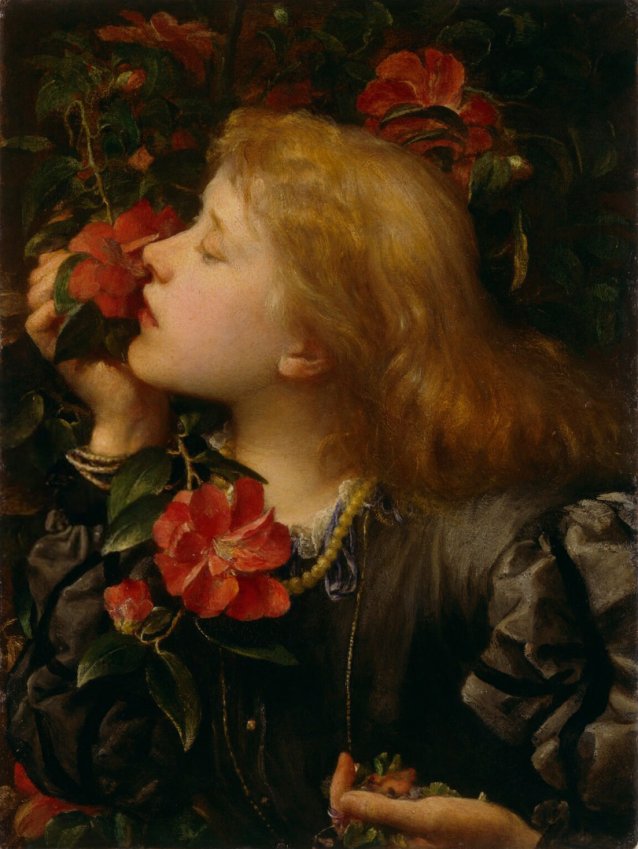Oil on strawboard mounted on Gatorfoam, 472 x 352 mm.
National Portrait Gallery, London. Accepted in lieu of tax by H.M. Government and allocated to the Gallery, 1975 (NPG 5048).
© National Portrait Gallery, London.
Source: npg.org.uk
Love Stories highlights the relationship between portraiture, love and desire and introduces the idea that concepts of love have changed over time. Amongst the many themes explored is the traditional idea of the muse as a beautiful yet invariably unobtainable woman who is desired by and inspires the creativity of a male artist, with her portrait serving as a means of ‘possessing’ the beloved. This portrait of Ellen Terry encapsulates that traditional relationship of artist and muse.
Born into a family of actors, Ellen Terry began performing as a child, acting in Shakespeare plays in London, and going on to tour throughout the British provinces in her teens. She was already a famous actress by the time of her marriage to the much older artist George Frederick Watts, who painted his young wife repeatedly. The deeply romantic portrait included here was completed shortly after their marriage, and is testament to his strength of feeling. Terry makes a choice between the blowsy and fragrance-less camellia and the more homely violet, in her hand, which was representative of domestic virtue. This represented her choosing between the stage and the home. Despite her integrity, the marriage was over within a year, and a mutual friend described the relationship as ‘absurd’: ‘he might as well marry the dawn or the twilight or any other evanescent and elusive loveliness of nature’.
Other more recent portraits in the exhibition go on to deconstruct the idea of the muse, radically re-imagining the figure of the muse, the limits of desire and the subject of the gaze.
















